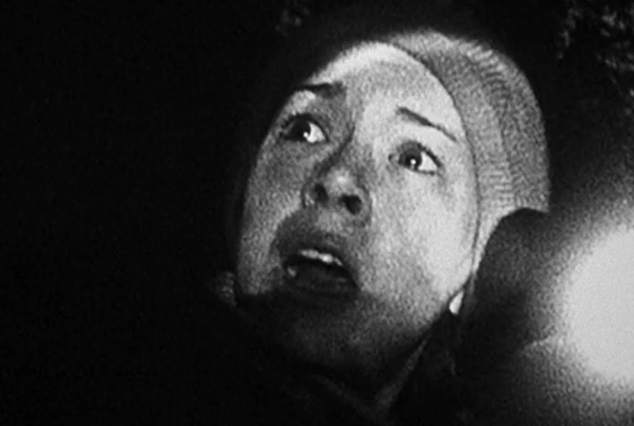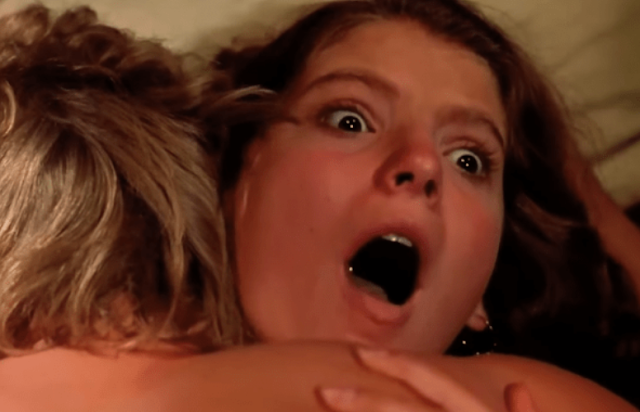Evolution of the found footage film - from Cannibal Holocaust to Host
Grab your camcorder, head down a dark hallway and - whatever you do - don't stop filming. It's time to look at the rise of the found footage film and how the subgenre has evolved.
Though many accuse found footage flicks of just being different permutations of shaky handheld camerawork, characters freaking out over twig snaps and semi-improvised dialogue, they've actually changed a fair bit over the past four decades.
But before we turn to Blair Witch and Cloverfield, one of the first found footage horror movies was actually released 20 years prior.
Cannibal Holocaust (1980) - a proto-found footage movie
Yep, though there are a tonne of differences between this notorious cannibal exploitation flick and later found footage movies, it actually established a number of ground rules in the subgenre.
In the movie, Alan Yates (Gabriel Yorke) and his team set out to capture anthropologically interesting footage in the Amazon, yet end up shooting a snuff movie and paying with their lives for their sadistic treatment of the natives.
It's a documentary-gone-wrong, a format which continues to be popular in the found footage subgenre. Yet Cannibal Holocaust actually blurred the boundary between real and fake in a more playful way than the films of the 1990s and 2000s. The footage we see from Yates' earlier film The Last Road to Hell is revealed to be staged, but was actually real stock footage of political executions. Infamously, the several visceral scenes of animal slaughter in the film were real too.
The movie had a similar marketing campaign to Blair Witch. Director Ruggero Deodato asked the actors to disappear for a year to trick the public into thinking they were actually dead. This backfired when he had to present them in court to prove he hadn't murdered them on-camera during the shooting of the movie.
The big difference between Cannibal Holocaust and later found footage flicks is - ironically - that we see how the footage was found. The first portion of the film is shot like a traditional movie, and acts as a framing narrative for The Green Inferno footage. As such - despite some thinking Deodato offed his cast - on a narrative level there is no attempt to present the action as footage discovered in the real world. Indeed, the movie ends with the Green Inferno footage being destroyed - a fate the censors no doubt prayed would befall Cannibal Holocaust itself.
The modern found footage film
Fast forward to 1999 and The Blair Witch Project kicked the found footage craze off in earnest (sorry Last Broadcast fans). The big difference here was the introduction of text cards or introductory spiels to convince you that what you were about to see was 'real' footage.
Blair Witch had: "In October of 1994, three student filmmakers disappeared in the woods near Burkittsville, Maryland while shooting a documentary. A year later their footage was found." Paranormal Activity (2007) claimed: "Paramount Pictures would like to thank the families of Micah Sloat & Katie Fatherston and the San Diego Police Department."
As in Cannibal Holocaust, these films often had no survivors, which begged the question of how exactly the footage was found - especially in the case of Cloverfield (2008) where NYC was about to get nuked. The advent of lightweight, affordable camera equipment also meant the characters no longer had to be serious filmmakers, just regular people who often had an unhealthy obsession with home video.
The behind the scenes stories of Blair Witch - a 24/7, improv-heavy shoot in the woods with the directors making things go bump in the night, the actors' IMDb pages edited to say they'd died - have become as iconic as the film itself, and couldn't be repeated for an audience now wise to these marketing tricks. The subgenre would have to find new ways of scaring an audience shitless who were now wise to the whole 'pretend your horror movie is real' shebang.
New permutations in the 2010s
As we head into the 2010s, we start to see found footage movies lose interest in convincing us they're ‘real’. The trope of abandoned camcorders discovered after the filmmakers are brutally killed starts to become less pervasive
Take 2014’s Unfriended. The action occurs in real time on a laptop screen as a group of teens are murdered by their dead friend on a video call. There’s no implication anyone’s been screen-recording this unfortunate turn of events - so the footage doesn’t exist as an artefact that’s discovered and later shared with the viewer.
The film is more interested in mining the increasing popularity of Skype and video calling for horror. The idea of friends seeing each other killed remotely by a paranormal entity is chilling. It’s even more effective considering that - with Netflix and streaming entertainment catching on in the mid-2010s - viewers were likely watching the film on a laptop themselves, making it easier to imagine that they too were part of the haunted video call.
This year, Host has opened up new possibilities for the desktop found footage film, exploring the potential of a haunting simultaneously happening in six different homes. While in Unfriended the vengeful spirit communicated with the teens en masse, in Host something spooky could pop up in any of the characters' video feeds at any time - and what's worse, the others would be powerless to help them.
Here found footage offers a sense of immersion and immediacy (the film takes place entirely in real time), but also a sense of distance. The friends enter the passive role of the viewer in each other's hauntings - they have to watch the others die knowing there's little they can do to stop it.
In 2015, Creep cast off a different set of genre expectations. Anyone who's seen the movie knows there's no way for the footage to be found and shared with the public. It's also a departure from the improvisatory dialogue and one-note characters we see in many found footage flicks - instead everything feels very deliberate, in the style of a taut thriller, with the characters given disturbing inner lives explored in no-holds-barred monologues.
The film operates like a series of Russian dolls - with what we've just watched recontextualised each time we cut away to see the footage being watched by one of the characters. In Josef (Mark Duplass) and Aaron's (Patrick Brice) twisted game of cat and mouse, the exchange of footage operates as both flirtation and threat, constantly asking us to see the film through new eyes.
The found footage sequel
With many found footage films going on to have sequels, writers found ways to have fans of the first film investigate if the footage could actually be real, inevitably putting themselves in danger. The Grave Encounters films (2011 and 2012) evolved so that the original movie acted as a lure to get a new cast of characters into the hospital. Grave Encounters 2 goes full on meta by approaching the first film as a horror movie pretending to be found footage which turns out to be actual found footage released as a film by a mercenary producer.
The ghosts, which in the first film were primarily concerned with jump scares and murder, take a more hands-on approach to filmmaking in the sequel, with a ouija board telling Alex (Richard Harmon) to "film everything". At the end of the film we're unconvingly told that what we've just seen is fictional, but a brief flash of longitudinal coordinates invite us to find the hospital ourselves, no doubt becoming the stars of Grave Encounters 3.
The Hell House trilogy (2015, 2018 and 2019) takes a similar direction. The documentary that comprised the first movie raises the profile of the haunted hotel and sets in motion the plot of Hell House II, where we see that a number of ghost hunters have been inspired to check the Abaddon out and haven't lived to tell the tale. The footage from the second movie is then sent (by ghosts) to Russell Wynn (Gabriel Chytry), which kicks off the plot of Hell House III. As in Grave Encounters, we have some PR sensitive spirits, eager to use found footage to promote their murderous activities.
The found footage subgenre has many detractors, but it's proven a versatile launching pad for creative cinematic decisions. With multiple sources of footage and different timelines, more recent found footage films have exploitled the format as a storytelling device rather than focussing their energies on marketing ploys to convince us the film is real.
Though The Blair Witch Project is still the first film anyone thinks of when they hear the words "found footage", films in the 2010s have pushed beyond its tropes, and it's intruiging where the subgenre will take us next.
Want more horror history? Why not check out the evolution of the werewolf transformation scene from The Wolf Man (1941) to When Animals Dream (2019).













Comments
Post a Comment